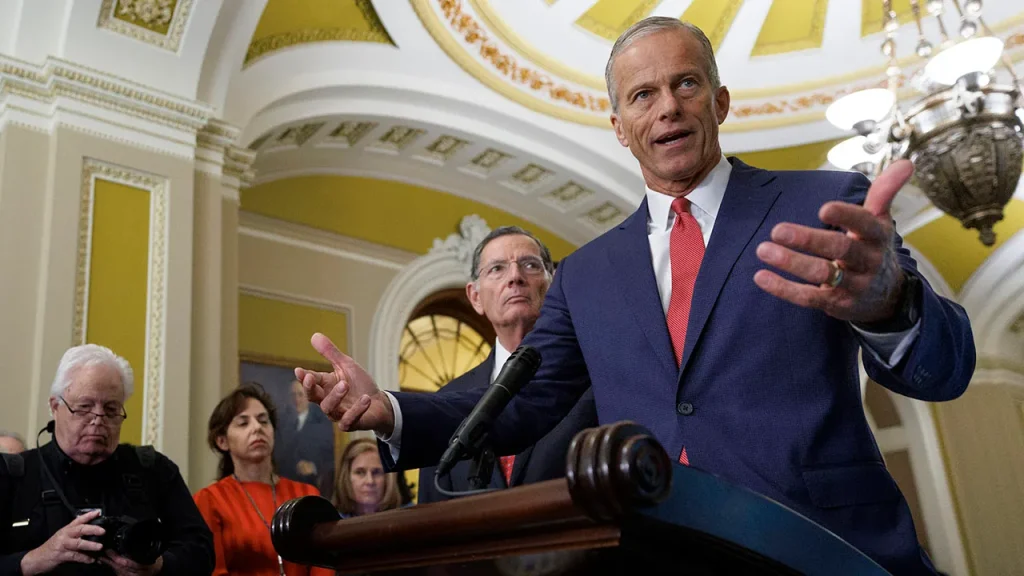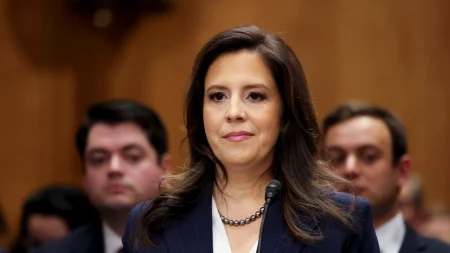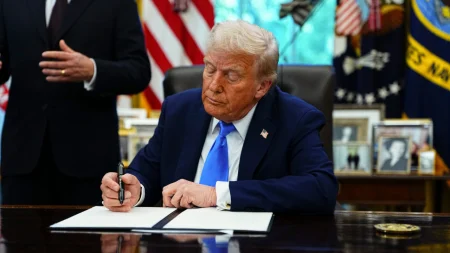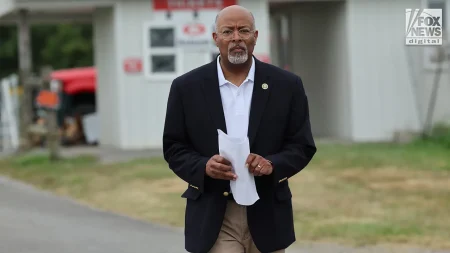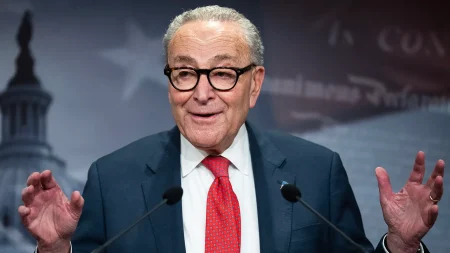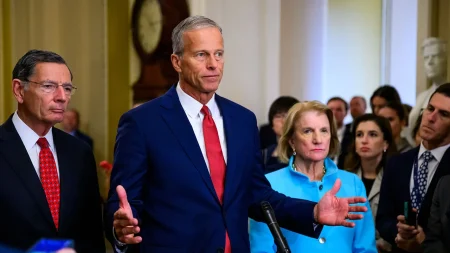Senate Breaks Shutdown Stalemate After 41 Days
After more than a month of political standoff, the Senate has finally broken through the government shutdown impasse, setting the stage for federal operations to resume later this week. The breakthrough came Monday night when eight Democratic senators crossed party lines to support a Republican-led funding package, effectively ending the 41-day shutdown stalemate.
The compromise legislation combines a continuing resolution (CR) to fund the government until January 30 with a trio of spending bills in what’s known as a “minibus package.” This bipartisan effort managed to overcome a significant hurdle despite weeks of entrenched positions on both sides. Senate Minority Leader Chuck Schumer and Democratic leadership had consistently demanded that any government reopening must include a concrete deal on expiring Obamacare subsidies. However, Senate Majority Leader John Thune instead offered what he had proposed from the beginning: a guaranteed vote on legislation addressing the subsidies “no later than the second week of December,” before they expire at year’s end.
Though Democrats didn’t secure their primary demand, the agreement wasn’t without concessions for their side. The revised continuing resolution includes important protections for federal workers: a reversal of the Trump administration’s firing of furloughed employees, assurance of back pay for affected workers, and new safeguards during future shutdowns. These provisions proved crucial in securing the necessary Democratic votes. Senator Jeanne Shaheen of New Hampshire, one of the Democrats who broke ranks, explained her decision pragmatically: “This was the only deal on the table. It was our best chance to reopen the government and immediately begin negotiations to extend the Obamacare tax credits that tens of millions of Americans rely on to keep costs down.” Similarly, Senator Tim Kaine of Virginia cited concern for federal workers’ wellbeing as his motivation, stating, “If you wait another week, they’re going to get hurt more, another month or even more. So what got me over the line was the pledge that they were able to give the federal employees.”
With the Senate hurdle cleared, attention now shifts to the House of Representatives, where Speaker Mike Johnson appears eager to move quickly. Johnson told Fox News Digital he would bring the House back into session “immediately” following Senate passage, and informed House Republicans to expect a vote as early as Wednesday. “We’re going to plan on voting, on being here, at least by Wednesday,” Johnson said during a lawmaker-only call. “It is possible that things could shift a little bit later in the week, but right now we think we’re on track for a vote on Wednesday. So we need you here.” This timeline suggests the government could potentially reopen before the end of the week, bringing relief to federal agencies and workers who have weathered significant disruption.
The path to this agreement wasn’t smooth or predictable. Even on Monday, the outcome remained uncertain despite lawmakers’ optimism after clearing the package’s first procedural test. Concerns about potential objections and parliamentary maneuvers threatened to derail the process throughout the day. Senator Bernie Moreno of Ohio reflected the sentiment of many colleagues when he observed, “I think everybody’s pretty united [behind] this bill. We want to reopen the government.” This statement captures the growing pressure on both parties to find a resolution as the shutdown dragged into its second month, affecting government services and creating hardship for federal workers.
Speaker Johnson’s approach to handling the legislation in the House reveals the continuing political sensitivities surrounding the shutdown resolution. While he’s moving quickly, Johnson indicated the House would not use suspension of the rules to fast-track the bill—a procedure that would bypass certain hurdles but require a two-thirds majority for passage. This decision makes sense given House Democratic leadership’s stated opposition to the package. Instead, Johnson expects the House Rules Committee to begin processing the legislation as early as Tuesday, setting up the anticipated Wednesday vote. This careful navigation of House procedures underscores the delicate political balance required to finalize the shutdown’s end, even as the finish line comes into view after 41 long days of government closure.





